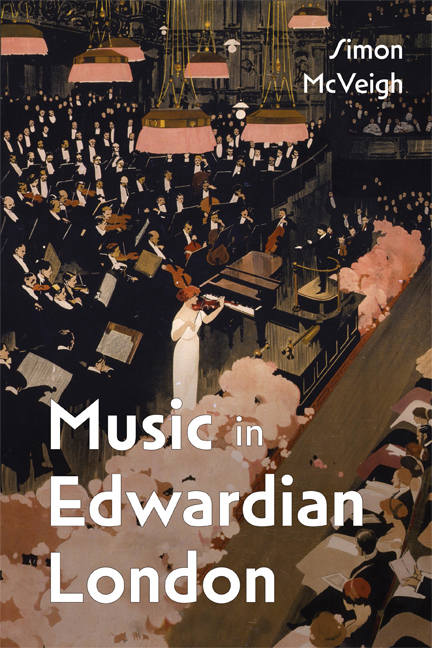Book contents
- Frontmatter
- Dedication
- Contents
- List of Illustrations
- Preface
- 1 Edwardian Soundscapes
- 2 Mapping a Musical City: Place (and Class)
- 3 Mapping a Musical City: Time (and Taste)
- 4 London as Musical Hub: Europe, America, Empire
- 5 The British Question
- 6 Britain and ‘Others’
- 7 Hidden Voices
- 8 From Battersea to Bermondsey: Suburban Music and Local Politics
- 9 London’s Music: An Overview
- Sources and Bibliography
- Index
- Miscellaneous Endmatter
2 - Mapping a Musical City: Place (and Class)
Published online by Cambridge University Press: 09 May 2024
- Frontmatter
- Dedication
- Contents
- List of Illustrations
- Preface
- 1 Edwardian Soundscapes
- 2 Mapping a Musical City: Place (and Class)
- 3 Mapping a Musical City: Time (and Taste)
- 4 London as Musical Hub: Europe, America, Empire
- 5 The British Question
- 6 Britain and ‘Others’
- 7 Hidden Voices
- 8 From Battersea to Bermondsey: Suburban Music and Local Politics
- 9 London’s Music: An Overview
- Sources and Bibliography
- Index
- Miscellaneous Endmatter
Summary
Urban landscapes
LONDON's POSITION IN THE late Victorian and Edwardian world was marked most spectacularly by its buildings. The city was never subjected to the remodelling that Paris enjoyed in the 1860s – closest, perhaps, was the construction of the Mall leading to Buckingham Palace, followed by the link between Aldwych and Holborn known as Kingsway. But a distinctive style of architecture, the ‘Edwardian Baroque’, gave public buildings not only a grandeur reflecting the imperial metropolis but also new layers of spectacle, opulence and comfort. The same spirit was reflected in a spate of new halls and theatres in the West End, the beating heart of the city's cultural life.
Since the eighteenth century, music had been centred on the London mansions of the upper classes, those affluent Georgian squares extending westwards towards fashionable Mayfair. But after restrictions on theatre building were lifted in 1843 the area became increasingly associated with leisure, as entertainment and shopping infiltrated middle-class lifestyles. In short, music had joined the consumerist revolution.
Central to this model were those modern transport links cutting through London's notorious congestion – the chaotic mix of horse-drawn carriages and omnibuses increasingly exacerbated by early motor vehicles. By 1900 there was already an extensive network of trains from the suburbs into termini around the inner Circle line; while the expanding underground system encouraged relatively inexpensive excursions ‘up West’.
Nothing could compete with the sheer pulling power of London's pleasure district. By comparison, the original City of London boasted no major concert hall or theatre until the Barbican Centre opened in 1982; nor was the exclusive shopping district in Knightsbridge accompanied by new venues, beyond the Royal Albert Hall. It was the West End that set the agenda.
To explore the shape of the musical city more closely, we’ll take a walking tour around London. But before entering the pleasure district, we first need to acknowledge that symbolic centre of musical tradition and power represented by Westminster Abbey.
The English musical tradition was built on choral singing; and for many, the Anglican church still offered not only education but also a large part of their living.
- Type
- Chapter
- Information
- Music in Edwardian London , pp. 14 - 58Publisher: Boydell & BrewerPrint publication year: 2024

